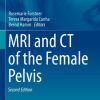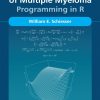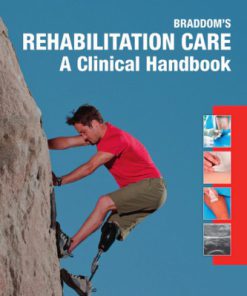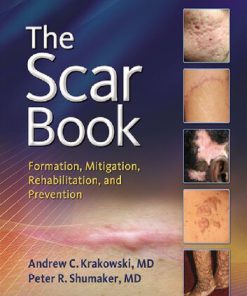Neurological Rehabilitation 1st Edition by Michael Barnes, David Good 0444529012 9780444529015
$50.00 Original price was: $50.00.$25.00Current price is: $25.00.
Neurological Rehabilitation 1st Edition by Michael P. Barnes, David C. Good – Ebook PDF Instant Download/DeliveryISBN: 0444529012, 9780444529015
Full download Neurological Rehabilitation 1st Edition after payment.

Product details:
ISBN-10 : 0444529012
ISBN-13 : 9780444529015
Author: Michael P. Barnes, David C. Good
Neurological Rehabilitation is the latest volume in the definitive Handbook of Clinical Neurology series. It is the first time that this increasing important subject has been included in the series and this reflects the growing interest and quality of scientific data on topics around neural recovery and the practical applications of new research. The volume will appeal to clinicians from both neurological and rehabilitation backgrounds and contains topics of interest to all members of the multidisciplinary clinical team as well as the neuroscience community. The volume is divided into five key sections. The first is a summary of current research on neural repair, recovery and plasticity. The authors have kept the topics readable for a non-scientific audience and focused on the aspects of basic neuroscience that should be most relevant to clinical practice. The next section covers the basic principles of neurorehabilitation, including excellent chapters on learning and skill acquisition, outcome measurement and functional neuroimaging. The key clinical section comes next and includes updates and reviews on the management of the main neurological disabling physical problems, such as spasticity, pain, sexual functioning and dysphagia. Cognitive, emotional and behavioural problems are just as important and are covered in the next section, with excellent chapters, for example, on memory and management of executive dysfunction. The final part draws the sections on symptom management together by discussing the individual diseases that are most commonly seen in neurorehabilitation and providing an overview of the management of the disability associated with those disorders. The volume is a definitive review of current neurorehabilitation practice and will be valuable to a wide range of clinicians and scientists working in this rapidly developing field.
Neurological Rehabilitation 1st Table of contents:
Section 1: Translational neuroscience
Chapter 1: Neural plasticity and its contribution to functional recovery
Definition
Sites of plasticity
Window of opportunity
Functional relevance
Plasticity, metaplasticity, and homeostatic plasticity
Genetic Influences
Noninvasive techniques capable of evaluating neuroplasticity in humans
Modulation of neuroplasticity
Conclusions
Acknowledgments
References
Chapter 2: Plasticity of cerebral functions
Introduction
Natural history of recovery after stroke
Mechanisms underlying recovery after cortical injury
Plasticity in the somatotopy of cortical motor maps as a reflection of vicarious function
Premotor cortex as a potential locus for vicarious function
Structural changes in motor cortex after stroke
Summary
References
Chapter 3: Neuroplasticity in the spinal cord
Introduction
Spinal cord injury
Mechanisms of plasticity in recovery from spinal cord injury
Physiological and molecular plasticity
Denervation supersensitivity
Reduced transmitter inactivation
Use-dependent plasticity
Short-term potentiation and depression
Long-term potentiation and depression
Long-term potentiation
Long-term depression
Habituation
Anatomical plasticity
Collateral sprouting
Dendritic remodeling
Regeneration
Regeneration vs. plasticity
Overcoming inhibition
Rho/Rho kinase pathway modulators
Blocking ROCK: Cethrin and fasudil
Blocking Nogo: antibody-mediated neutralization or receptor blockade
Chondroitinase ABC
Enhancing intraneuronal mechanisms of growth
Cyclic AMP
PTEN/mTOR
Combination therapies: cell- and tissue-based therapies
Bridge formation
Neural networks
Conclusions
References
Chapter 4: Neural tissue transplantation, repair, and rehabilitation
Introduction
Cell replacement and structural repair by neural transplantation
Cell source
Cell transplantation
Immunological factors
Mechanisms of functional recovery after neural transplantation
Neuroendocrine/neurochemical replacement
Maximizing circuit repair
Minimal conditions for recovery
Transplant-derived plasticity
Behavioral experience affects transplant integration and function
Environmental enrichment
Motor activity and training
Learning (and relearning) to use the transplant
Learning to use the transplant
Learning using the transplant
Rehabilitation strategies to promote transplant function
Acknowledgments
References
Chapter 5: Clinical trials in neurorehabilitation
Introduction
Complexity of human randomized clinical trials
Recruitment
Retention
Treatment fidelity
Treatment integrity
Strategies to promote treatment integrity
Treatment differentiation
Control intervention
Beyond randomized controlled trials
Study design
Interpretation of results
Outcome measurement
Translation of evidence from clinical trials in neurorehabilitation to clinical practice
Summary
References
Chapter 6: Brain–computer interfaces
Introduction
The definition of a brain-computer interface
The brain signals used in BCIs
Current BCIs
Signal processing
BCI users
BCI applications
BCIs in neurorehabilitation
BCI research and development
Acknowledgments
References
Section 2: Basic principles
Chapter 7: Epidemiology of neurologically disabling disorders
Introduction
Sudden Onset
Stroke
Subarachnoid hemorrhage
Traumatic brain injury (TBI)
Spinal cord injury
Other sudden onset conditions
Progressive disorders
Amyotrophic lateral sclerosis (MND)
Parkinson disease
Multiple sclerosis
Dementia and alzheimer disease
Other progressive disorders
Intermittent disorders
Epilepsy
Migraine
Stable disorders
Cerebral palsy
Spina bifida
conclusion
References
Chapter 8: Motor learning principles for neurorehabilitation
Introduction
Motor adaptation
Skill learning
Motor learning in patients
Motor learning deficits in patients
Recovery of impairment versus functional compensation
Relevance of learning principles for patients and their relationship to timing of intervention
References
Chapter 9: Outcome measures in stroke rehabilitation
Introduction
Factor 1: conceptual framework
Factor 2: psychometric properties
Factor 3: mode of administration and source of information
Factor 4: respondent burden and feasibility
Generic or disease-specific measures
Cognitive outcome measures
Barriers to outcome measurement
Reporting outcomes
Outcomes case study
References
Chapter 10: Organization of rehabilitation services
Introduction
Areas addressed by rehabilitation
Rehabilitation team structures
Models of team working in rehabilitation
Components of the rehabilitation process
Teamwork
Setting goals
Measuring outcomes
Case coordination
Models of service delivery
Complex specialized rehabilitation services for neurological conditions
Outpatient and community rehabilitation
Residential rehabilitation
Vocational rehabilitation
Conclusions
References
Chapter 11: Functional neuroimaging
Introduction
Stroke alters brain activation patterns
Anatomical substrates of motor system reorganization after stroke
The functional relevance of lesion-induced brain reorganization
Predicting recovery with neuroimaging
Conclusions
References
Section 3: Management of functional problems
Chapter 12: Gait disorders
Introduction
Physiological basis of human locomotion
Gait disorder in parkinson disease
Central mechanisms
Proprioceptive reflexes and muscle tone
Load receptor function
Therapeutic approaches
Spastic gait disorder
Reflexes and muscle tone
Motor unit transformation
Therapeutic approaches
Children with cerebral palsy
Other gait disorders
Target for rehabilitation: plasticity of the central nervous system
Outlook
Acknowledgments
References
Chapter 13: The diagnosis and management of adults with spasticity
Introduction
Definition of spasticity
Classification
Epidemiology
Pathophysiology of spasticity
Overview
Pathophysiology
Spinal reflexes
Hypertonia
Clasp-knife response
Associated reactions and mass reflex
Flexor spasms
Disordered control of movement
Thixotropy and muscle contractures
Why treat spasticity?
Principles of spasticity treatment
Aims of management
Patient assessment
Management
Physical
Medical
Oral medication
Intrathecal treatments
Intrathecal baclofen
Intrathecal phenol
Chemodenervation
Neuromuscular blockade
Outcome measures
Appendix 1: Measures of spasticity and outcome measures
Ashworth scale (Ashworth, 1964)
Tardieu scale (Tardieu et al., 1954; Gracies, 2001)
Wartenberg pendulum test (Wartenburg, 1951)
Knee joint (Valle et al., 2006)
Other methods
Appendix 2: Goal attainment scaling(GAS)
Chapter 14: Neurorehabilitation approaches to facilitate motor recovery
A paradigmatic change
Evidence-based medicine
Advances ln knowledge about “motor learning´´
Training approaches for the upper extremity
Repetitive training
Impairment-oriented training (IOT)
Task-oriented training
Constraint-induced movement therapy
Mirror therapy
Mental training
Movement observation
Neuromuscular electrical stimulation, functional electrical stimulation
Electromyographic (EMG) biofeedback
Acupuncture
Neuromodulation approaches
Neuromodulation by repetitive transcranial magnetic stimulation
Neuromodulation by cortical DC stimulation
Neuromodulation by pharmacological interventions
Training approaches for the lower extremity
Treadmill training with partial body-weight support
Rhythmic acoustic stimulation
The use of mechanical devices (robots)
Modular therapies
Where to go from here?
References
Chapter 15: Neuropathic pain
Introduction
Definition
Etiology
Classification
Epidemiology
Neuropathic pain pathophysiology
Assessment and diagnosis of neuropathic pain
Pharmacological management of neuropathic pain
Neuropathic pain special interest group guidelines
First-line medications: antidepressants with both norepinephrine and serotonin reuptake inhibition
Tricyclic antidepressants (TCAs)
Selective serotonin-norepinephrine reuptake inhibitors (SSNRIs)
Calcium channel α2-sigma ligands
Topical lidocaine
Second-line medications: opioids and tramadol
Opioids
Tramadol
Third-line medications
Central neuropathic pain: special consideration
EFNS guidelines on pharmacological treatment of neuropathic pain
Canadian pain society guidelines
Combination therapy for neuropathic pain
Nonpharmacological treatment
Diabetic neuropathy
Trigeminal neuralgia
Postherpetic neuralgia
Chronic regional pain syndrome
Post-spinal cord injury neuropathic pain
Central post-stroke pain (CPSP)
Neuropathic cancer pain
Summary
References
Chapter 16: Balance
Introduction
Principles of balance physiology, disorders, and assessment
Balance disorders
Balance assessment
Functional assessment
Impairment-based assessment
Motor function
Sensory function assessment
The role of posturography
Perception of the gravitational vertical
Cognition
Symptoms assessment
Additional factors that may affect outcome
Balance rehabilitation
Re-training postural alignment and movement strategies
Re-training sensory strategies
Learning to adapt strategies to changing contexts
Re-training cognitive strategies
Vestibular exercises and treatment of BPPV
Efficacy of balance rehabilitation in neurological disorders
Peripheral and central vestibular disorders
Stroke
Polyneuropathies
Parkinson disease and other movement disorders
Normal pressure hydrocephalus
Multiple sclerosis
Cerebellar disorders
Falls prevention
Conclusion
References
Chapter 17: Neurogenic lower urinary tract dysfunction
Introduction
The bladder in health and neurological disease
Storage phase
Voiding phase
Causes of neurogenic lower urinary tract dysfunction
Dementia
Stroke
Basal ganglia disorders
Multiple sclerosis and other demyelinating disorders
Spinal cord injury
Spina bifida
Cauda equina syndrome and peripheral neuropathy
Evaluation
Approach to neurogenic lower urinary tract dysfunction
Treatment
Impaired voiding
Impaired storage
Appliances and equipment
Infections
Multidisciplinary approach
Financial and competing interests disclosure
Acknowledgments
References
Chapter 18: Neurogenic bowel
Overview and impact on quality of life
Altered physiology
Implications for bowel function in central neurological conditions
Managing bowel dysfunction
Assessment
Developing a conservative management program
Alternative strategies for management of neurogenic bowel dysfunction
Conclusion
References
Chapter 19: Neurological rehabilitation: sexuality and reproductive health
Introduction
The role of counseling
Anatomy and physiology of sexual and reproductive functions
Male anatomy
Spermatogenesis
Psychology, neurology, and erectile physiology
Female anatomy and neurophysiology
Myelopathy
Spinal cord injury and its impact on males
Sexual function
Reproductive dysfunction in men with SCI
Spinal cord injury in women
Sexual function
Menstrual cycle, fertility, and pregnancy in SCI
Multiple sclerosis
Males
Females
The developmental neurological disorders (cerebral palsy, static encephalopathy, autism)
Stroke
Traumatic brain injury
Geriatrics
Male sexuality and aging
Female sexuality and aging
Secondary complications of neurological illness and their treatment
Medications and sexual dysfunction
Conclusion
References
Chapter 20: Autonomic dysfunction: recognition, diagnosis, investigation,management, and autonomic n
Introduction
Classification of autonomic dysfunction
Clinical features in autonomic disorders
Investigations in autonomic disorders
Assessing cardiovascular autonomic function
Assessing sudomotor autonomic function
Cardiovascular autonomic dysfunction causing orthostatic hypotension
Additional considerations in the management of msa and parkinson disease
Autonomic (neurally) mediated syncope: to include vasovagal syncope (VVS), syncope caused by carotid
Postural tachycardia syndrome
Initial orthostatic hypotension
Hypertension
Sudomotor autonomic dysfunction
References
People also search for Neurological Rehabilitation 1st:
berlin medical and neurological rehabilitation
woodlands neurological rehabilitation centre
umphred’s neurological rehabilitation
holywell neurological rehabilitation unit
midway neurological & rehabilitation center
Tags: Neurological, Rehabilitation, Michael Barnes, David Good
You may also like…
Education Studies & Teaching
Fireflies Memory Identity and Poetry 1st Edition David 9463511490 9789463511490
History - World History
Politics & Philosophy
Arts - Architecture
Good Office Design 1st Edition David Littlefield 100070517X 9781000705171
Computers - Computer Graphics & Design
Bottlenecks 1st Edition by David C Evans ISBN 1484225791 978-1484225790
Medicine
The Scar Book: Formation, Mitigation, Rehabilitation and Prevention 1st Edition Andrew C. Krakowski












